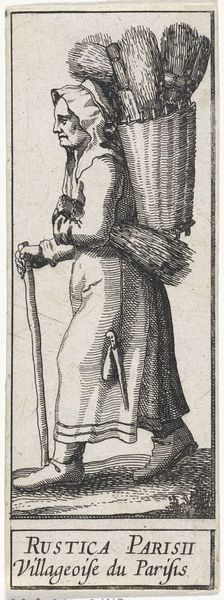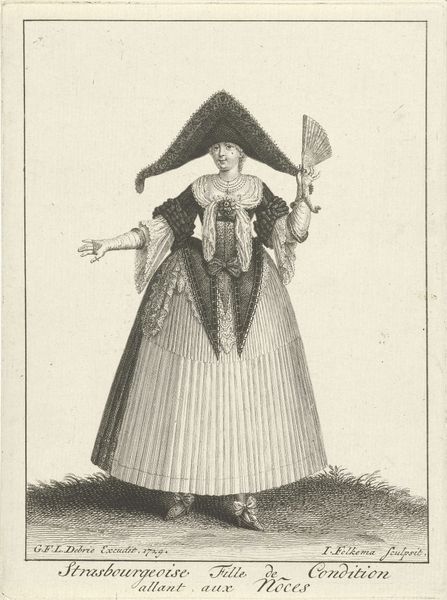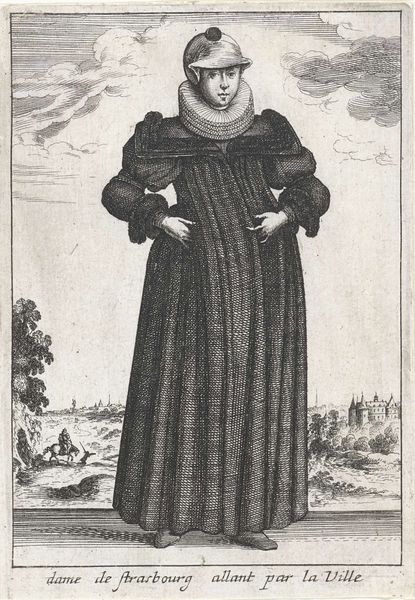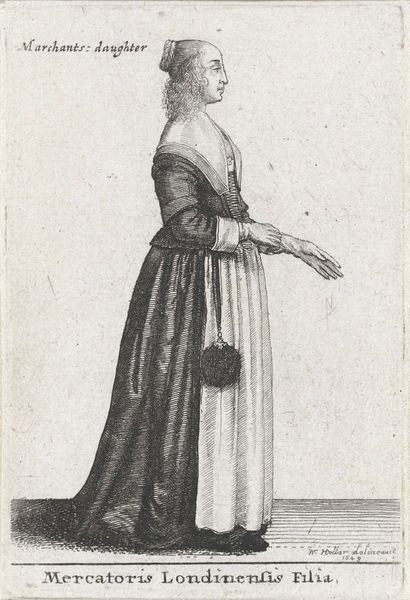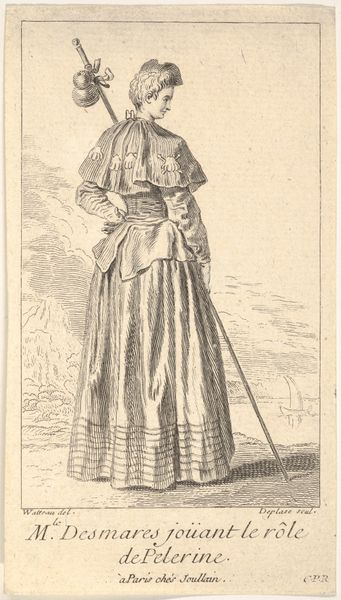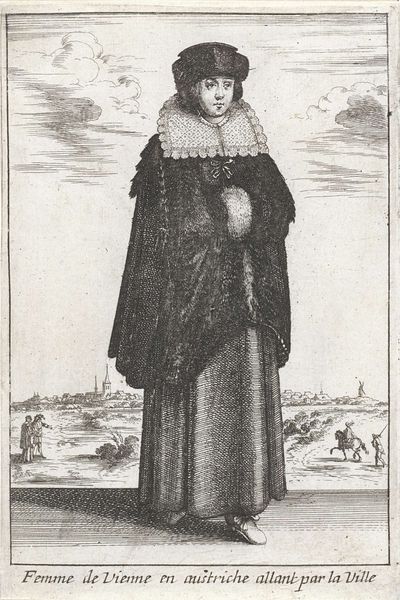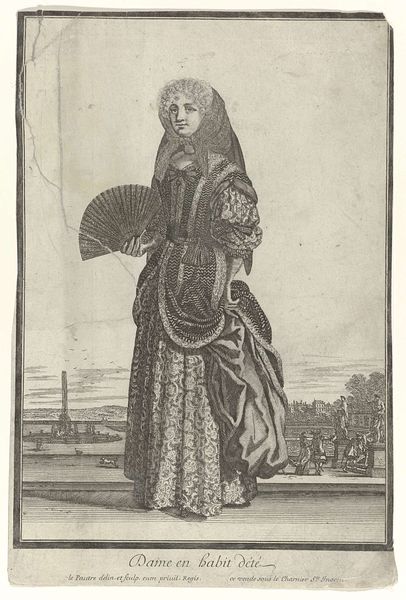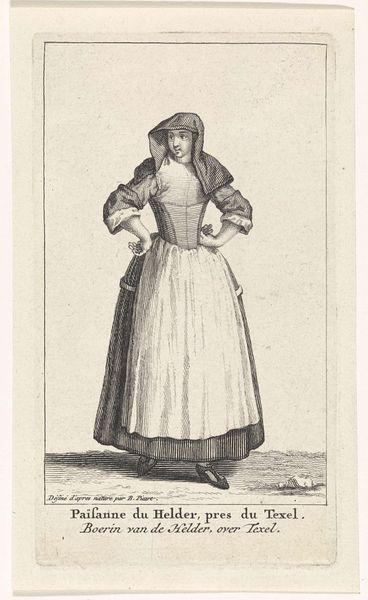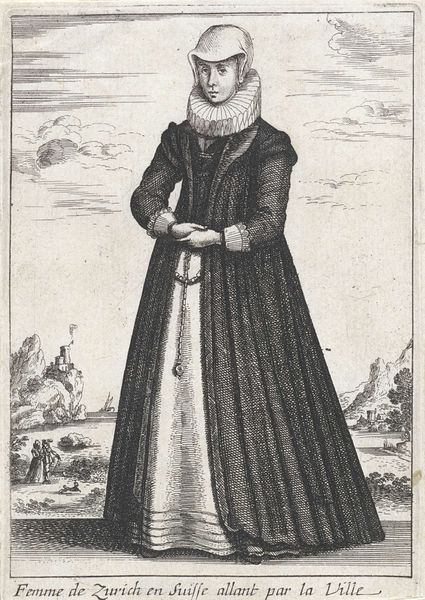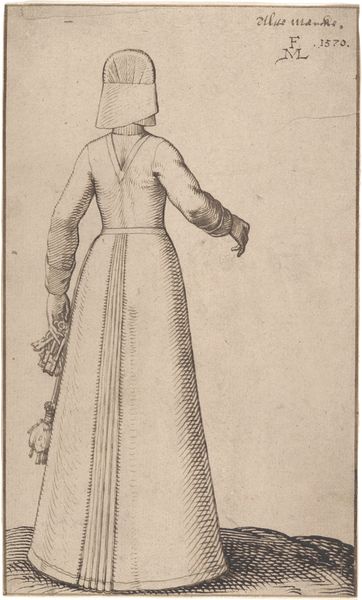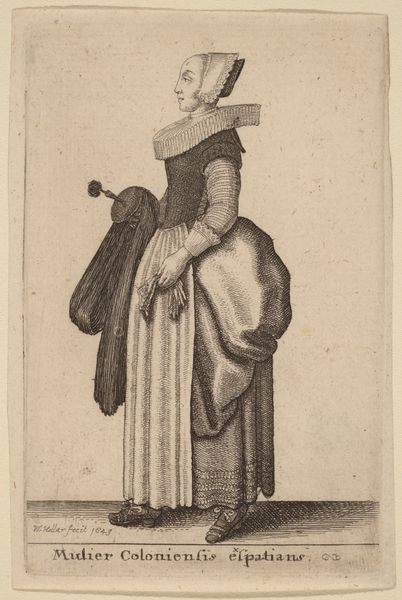
print, etching
#
portrait
#
baroque
# print
#
etching
#
figuration
#
genre-painting
Dimensions: height 267 mm, width 160 mm
Copyright: Rijks Museum: Open Domain
Editor: So, here we have Pieter van den Berge’s etching, "Waterlandse melkmeid," created after 1694. It’s currently at the Rijksmuseum. She looks... strong, and kind of stoic, carrying all that milk. How should we interpret her image? Curator: Well, let's unpack that 'stoic' impression. In its time, this image existed within a very particular socio-economic landscape. Who was able to create or buy art at that time, and what do you imagine their relationship to this woman was? Editor: Right, probably affluent people who were *buying* her milk, not carrying it themselves! It feels a bit… distant, almost like an advertisement. Curator: Precisely. These genre scenes often served to reassure the rising merchant class. They offered a vision of a stable, productive countryside, even while disparities widened. This woman is picturesque, but the print glosses over the realities of labor and economic exploitation inherent in her role. Look at her garments. What statement are these elements making? Editor: That’s interesting! Her clothes look functional, not fancy, but they are not tattered. I suppose it’s about showing a sort of ideal worker, but without delving into any hardship. Curator: Exactly. Consider the term "genre painting" itself - it inherently creates types, often reinforcing social hierarchies. Do you think contemporary portrayals of labor are any different in this regard? How are class, labor, and gender portrayed in contemporary visual media? Editor: That’s true! I’d not considered her labor like that before – I was looking at the style only. Thanks for that new perspective! Curator: It is my pleasure. Now, looking at the broader implications of the image makes one conscious of the subtle narratives that persist even today.
Comments
No comments
Be the first to comment and join the conversation on the ultimate creative platform.

